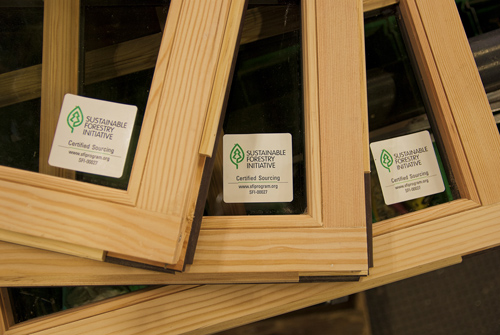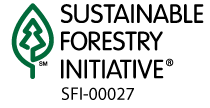xxx,xxx,xxx,xxx
METRIC TONS OF CO2
EQUIVALENT TO
SCRUBBING FROM THE AIR THE ANNUAL
CO2 EMISSIONS FROM xxx.xxx,xxx,xxx VEHICLES
Forests and Green Building

Wood is the only building material that has third party-certification programs in place to verify that the products being sold have come from a sustainably managed resource. Sustainable forest certification is a voluntary tool that allows forest companies to demonstrate the sustainability of their practices by having them independently assessed against a standard that goes beyond regulatory requirements and takes into consideration environmental, economic and social values.
Study after study has shown that wood outperforms other materials when considered over its lifetime using Life Cycle Analysis (LCA). One study conducted by the Canadian Wood Council compared the life cycle environmental impacts of 50,000 square foot office buildings constructed using wood, steel and concrete as the main structural materials. The results show that wood outperforms both materials in terms of energy use, greenhouse gases, air pollution, solid waste and ecological resource impacts. Numerous other studies conducted by independent LCA experts at the Consortium for Research on Renewable Industrial Materials (www.corrim.org) have reached the same conclusion: wood buildings offer clear environmental advantages.
Conclusions from a CORRIM Study:
Energy Use:
- Construction of the wood-frame home used 17% less energy than the matching steel-frame home.
- Construction of the wood-frame home used 16% less energy than the matching concrete-frame home.
- The energy consumption measured included not just electricity, but also diesel and fuel oil to extract and haul materials, natural gas to generate steam in lumber mills, and electricity for steel mills.
Global Warming:
- The global warming potential of the wood-frame home was 26% lower than the steel-frame home.
- The global warming potential for the wood-frame home was 31% lower than for the concrete-frame home.
- Using wood products instead of steel or concrete can further reduce greenhouse gas emissions from fossil fuels because more than half the energy used by wood mills comes from biomass - bark, sawdust and other residuals - a renewable source of energy.

